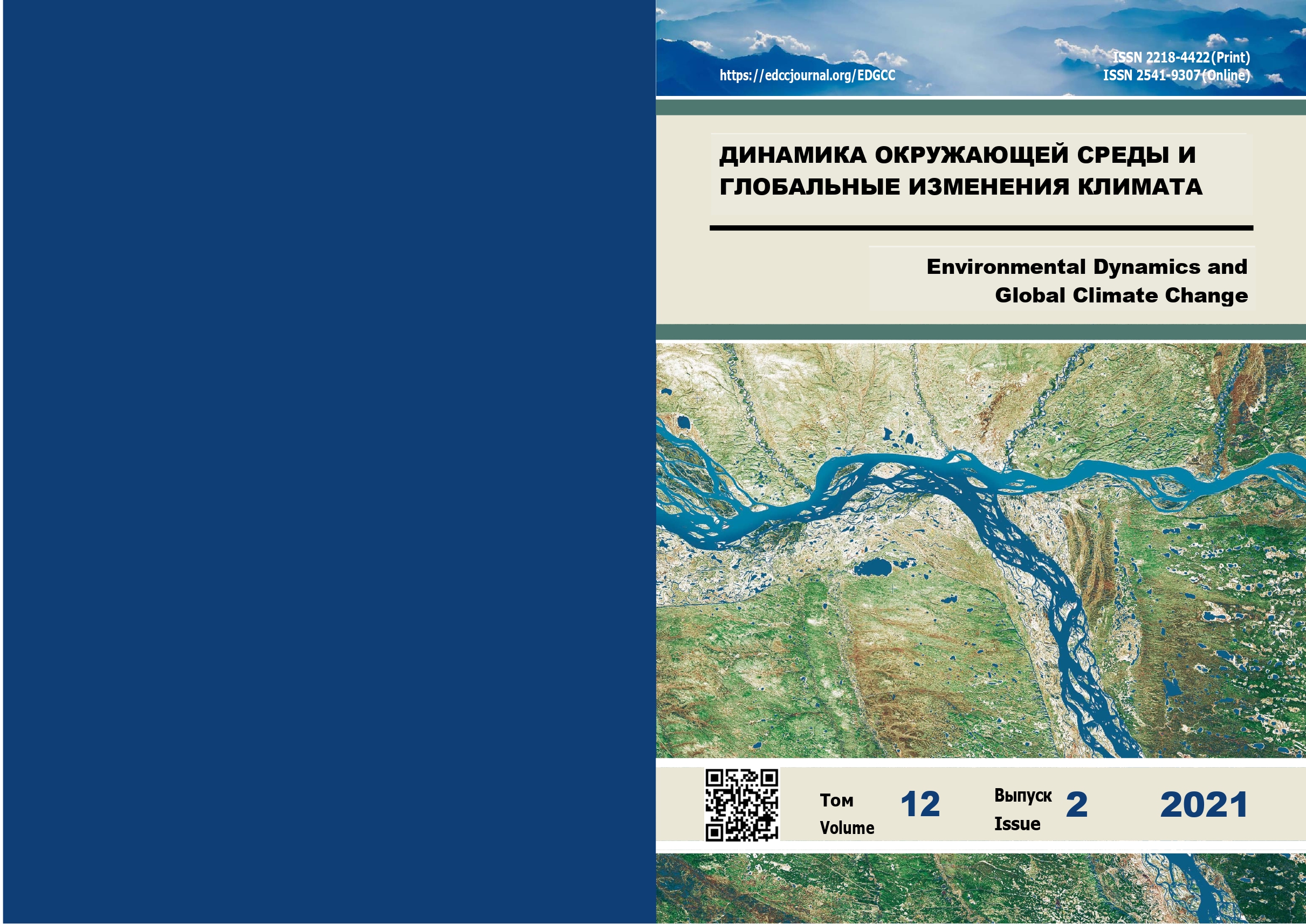Том 12, № 2 (2021)
- Год: 2021
- Выпуск опубликован: 10.12.2021
- Статей: 8
- URL: https://edgccjournal.org/EDGCC/issue/view/4536
Весь выпуск
Теоретические работы
Kinetic isotopic effect: static Rayleigh equation and basic dynamic isotope equation for the substrate in the description of nitrite-dependent anaerobic oxidation of methane
Аннотация
В статье приводятся результаты моделирования некоторых химико-биологических процессов с использованием стандартного изотопного динамического уравнения. Не задавая конкретную функцию скорости процесса, из основного динамического изотопного уравнения выведено традиционное статическое уравнение Релея. Исследованные динамические процессы включали рост водорослей (изотопы азота), денитрификацию нитрата в азот почвенными микроорганизмами (изотопы азота), метанизацию ацетата при различных концентрациях аммония (изотопы углерода), аэробное окисление метана (изотопы углерода и водорода), образование метана в донных олтложениях тропических озер (изотопы углерода), образование метана в торфе бореального мезотрофного болота (изотопы укглерода), образование метана с лаг-фазой в донных отложениях тропического озера (изотопы углерода), формирование анаэробного консорциума метан-окисляющих архей и сульфат-редуцирующих бактерий (изотопы серы), образование метана и двуокиси углерода в Западно-Сибирском евтрофном болоте (изотопы углерода), образование метана и его анаэробное окисление нитратом (изотопы углерода).
 51-58
51-58


Reducing of greenhouse gas emissions in Russia: state of the art and compensatory measures for reforestation as a net CO2 absorber
Аннотация
В статье представлен обзор и анализ состояния проблемы снижения выбросов парниковых газов (ПГ) в России, рассмотрены меры, разработанные на уровне страны и отдельных корпораций-эмитентов ПГ для борьбы с изменением климата. Особое внимание уделено способам компенсации углекислого газа (СО2), в том числе с учетом поглощающей способности лесов. Описан опыт крупнейшей российской нефтяной компании «Татнефть» по реализации проекта по выведению и масштабированию триплоидной осины с повышенной поглощающей способностью для посадки саженцев в лесных массивах с целью снижения и компенсации углеродного следа.
 59-66
59-66


Редакторская заметка
The 55th anniversary and 40 years of scientific activity of M.V. Glagolev
Аннотация
Сообщение от редакции журнала ДОСиГИК
По совместному решению редакции часть этого выпуска посвещена 55-летию главного редактора нашего журнала, М.В. Глаголева. В связи с этим в выпуске представлена статья на его 55-летие и ряд старых статей, которые были написаны, но оказались не доступны широкому кругу читателей. Хотя данные статьи написаны давно, они по прежнему представляют интерес для читателей. Тексты статей были предоставлены М.В. Глаголевым и отредактированы Д.В. Ильясовым и М.В. Яниным.
От лица редакции сердечно поздравляем с 55-летием главного редактора журнала, М.В. Глаголева!
 67-70
67-70


Обзоры и лекции
55th anniversary of M.V. Glagolev
Аннотация
В связи с 55-летним юбилеем известного западносибирского ученого Михаила Владимировича Глаголева дается обзор его научной и научно-организационной деятельности. Упомянуты основные публикации Михаила Владимировича, и для некоторых из них приводится краткое содержание. Все обсуждаемые работы разделены на шесть категорий: 1) газовая динамика экосистем; 2) картирование болот; 3) микробиология; 4) моделирование экологических процессов и другие математические методы; 5) другие работы и жанр дискуссий; 6) учебные и обзорные публикации. Кроме того, приводятся наукометрические показатели, характеризующие деятельность М.В. Глаголева.
 71-106
71-106


Mathematical modeling of microorganism growth (analytical approach)
Аннотация
Данная работа представляет собой доклад «Математическое моделирование роста микроорганизмов», написанный по предложению преподавателя математики Л.С. Акинфиевой в 1982 г. в бытность автора учеником 10-го класса специализированной (с углубленным изучением биологии) школы №11 г. Москвы. Всем учащимся данного класса было предложено написать доклады (в качестве «подарка к 60-летию СССР») в рамках общей темы «Математика в моей будущей профессии».
В докладе приводятся основные уравнения кинетики роста и отмирания микроорганизмов, а также потребления ими питательного субстрата (уравнения Мальтуса, Моно, модель Герберта). Кроме самих уравнений микробиологической кинетики продемонстрированы некоторые способы получения их приближенных решений в виде явных функций (без использования численных методов).
 107-122
107-122


Mathematical modeling in soil biokinetics
Аннотация
Данная работа представляет собой доклад, написанный по предложению к.б.н. Н. С. Паникова в 1985 г. в бытность автора студентом 2-го курса факультета почвоведения МГУ им. М. В. Ломоносова.
В докладе приводится пример математической модели почвенной биокинетики и обсуждаются численные методы решения составляющих ее уравнений. Для стационарного случая приводятся некоторые полезные компьютерные программы, а для нестационарного – даны ссылки на программы, опубликованные в литературе.
 123-144
123-144


Inverse problems of soil biokinetics
Аннотация
Данная работа представляет собой материалы доклада, подготовленные по предложению Н. С. Паникова в 1985-1986 гг. в бытность автора студентом 3-го курса факультета почвоведения МГУ им. М.В. Ломоносова.
В докладе приводятся определения прямой и обратной задачи. Дана классификация обратных задач и несколько примеров таких задач, встречавшихся в почвоведении и биологической кинетике. Затронут вопрос о некорректности обратных задач и кратко перечислены основные методы их решения. Подробно рассмотрена задача идентификации источника газа в почвенной колонке послойно-балансовым методом (по измерениям динамики концентрационного поля). Эта задача доведена до компьютерной программы, а для других даны полезные ссылки на программы, опубликованные в литературе.
 145-166
145-166


Kostychev-Orlov equation and first mathematical models of humus dynamics
Аннотация
Данная работа представляет собой материалы доклада, подготовленные по предложению талантливого советского ученого В.В. Зеленева в 1986-1987 гг. в бытность автора студентом 4-го курса факультета почвоведения МГУ им. М.В. Ломоносова.
В докладе приводится анализ уравнения, предложенного на заре почвоведения П.А. Костычевым для максимального уровня накопления гумуса (и в дальнейшем модифицированного Д.С. Орловым). Показано, что с точки зрения математики уравнение Костычева лишено смысла и вообще не имеет решения. Усовершенствованное Орловым, оно уже имеет решения, однако эффективно использоваться, по-видимому, все равно не может. В связи с этим рассматриваются различные типы тех математических моделей динамики гумуса, которые реально использовались специалистами в почвоведении и экологии.
 167-187
167-187











